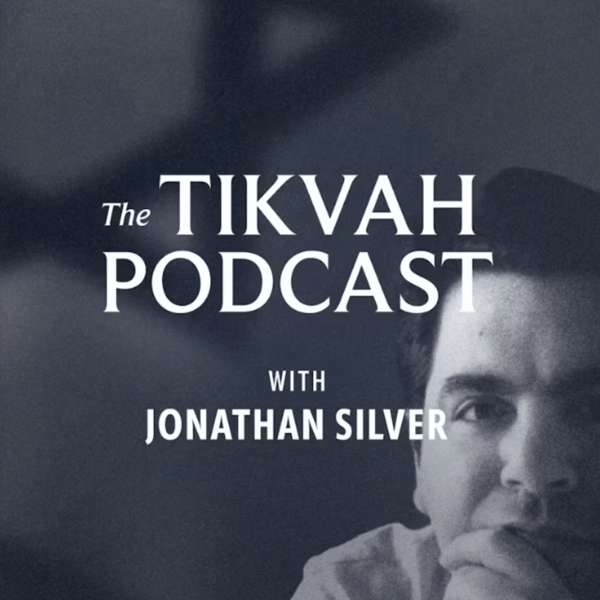Neil Rogachevsky and Dov Zigler on the Political Philosophy of Israel's Declaration of Independence
The Tikvah Podcast
Tikvah
4.6 • 620 Ratings
🗓️ 30 March 2023
⏱️ 43 minutes
🧾️ Download transcript
Summary
Nearly 75 years ago, on May 14, 1948, David Ben-Gurion proclaimed Israel’s sovereignty: a renewed Jewish state, the political expression of the national home of the Jewish people, located in their ancestral homeland.
Many essays and books have been published about the words Ben-Gurion spoke that day—Israel’s Declaration of Independence. But the professor Neil Rogachevsky and his co-author Dov Zigler take a new angle on the declaration and what it means.
In a new book from Cambridge University Press, Israel’s Declaration of Independence: The History and Political Theory of the Nation’s Founding Moment, they look at the drafting process and distill from the elements that endured from draft to draft—as well as the elements that were changed or removed—a political theory of Israel's founding, in which the political purposes of the Israeli project are made most clearly manifest.
How, in other words, did Israel’s founders think about rights, about citizenship, about the justifications of Israel’s sovereignty, an Israeli view of freedom, of civil order, and of religion? That’s the subject of their new book—and the subject of the conversation they have here with Mosaic editor Jonathan Silver.
Musical selections in this podcast are drawn from the Quintet for Clarinet and Strings, op. 31a, composed by Paul Ben-Haim and performed by the ARC Ensemble.
Transcript
Click on a timestamp to play from that location
| 0:00.0 | It won't be long before Israel turns 75 years old. |
| 0:11.5 | 75 years ago, on May 14, 1948, David Ben-Gurion proclaimed Israel's sovereignty, |
| 0:18.0 | a renewed Jewish state, the political expression of the national |
| 0:22.3 | home of the Jewish people located in their ancestral homeland. Welcome to the Tikva podcast. I'm your |
| 0:28.4 | host, Jonathan Silver. Today we look at the document that was the instrument of that declaration. |
| 0:34.7 | We'll look at the drafting process that produced it. We'll look at the |
| 0:38.4 | history of Israel's Declaration of Independence. My guests are co-authors of a new book on that |
| 0:44.3 | subject, Neil Rogachevsky and Dov Ziegler. Now, before I bring you our conversation, |
| 0:50.2 | let me say a word about what's so distinctive and fascinating about their treatment of Israel's |
| 0:55.6 | Declaration of Independence. After all, the longtime mosaic contributor and distinguished historian |
| 1:01.5 | Martin Kramer has written an eight-part series, and indeed also offered an eight-part video |
| 1:07.2 | course in which he too foregrounds this document and allows the battles of Israel's |
| 1:12.6 | War of Independence to recede to the background. Kramer too documents various drafts and their |
| 1:18.9 | authors. It's a wonderful treatment of the history behind Israel's declaration, and I think it |
| 1:24.0 | complements Rogachevsky and Ziegler's book in mutually beneficial ways. |
| 1:28.3 | You see, Rogachevsky and Ziegler, as you'll soon hear, are not blind to the history behind the drafting of this document. |
| 1:36.3 | Indeed, tracing in detail that history is the manner in which they conduct their inquiry. |
| 1:42.3 | But historical analysis is not altogether their |
| 1:45.6 | objective. Instead, it's to look at the drafting process and to try and distill from the elements |
| 1:52.3 | that endure from draft to draft, and the elements that are changed or removed and replaced. |
| 1:57.8 | From that, they're able to articulate a political theory of the Israeli founding, |
| 2:02.8 | in which the ends or purposes of Israeli sovereignty are made more clearly manifest. How did |
... |
Please login to see the full transcript.
Disclaimer: The podcast and artwork embedded on this page are from Tikvah, and are the property of its owner and not affiliated with or endorsed by Tapesearch.
Generated transcripts are the property of Tikvah and are distributed freely under the Fair Use doctrine. Transcripts generated by Tapesearch are not guaranteed to be accurate.
Copyright © Tapesearch 2025.

